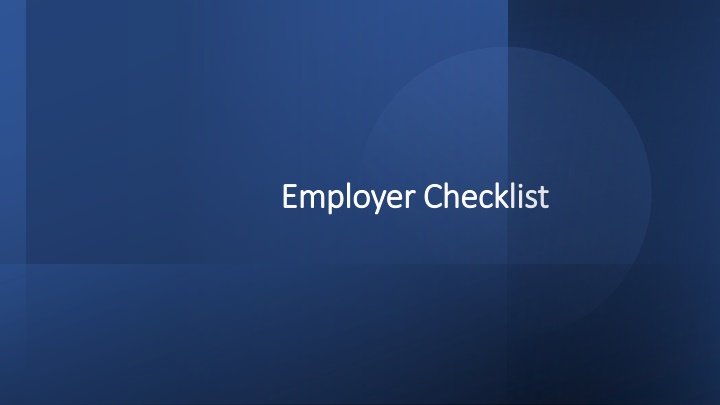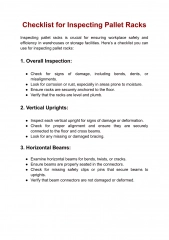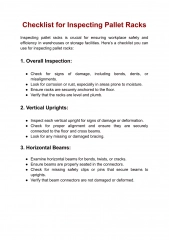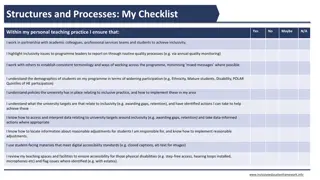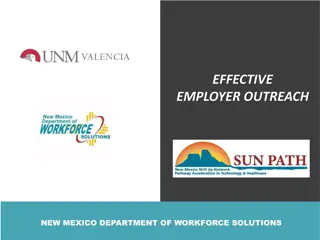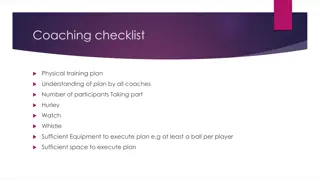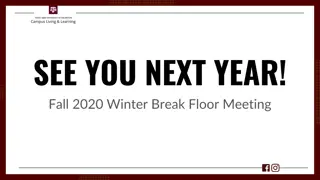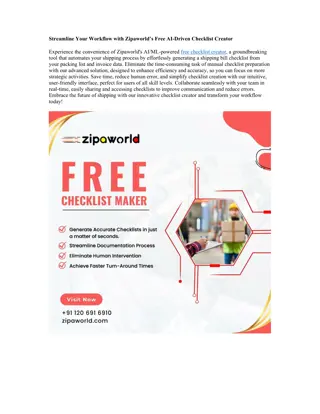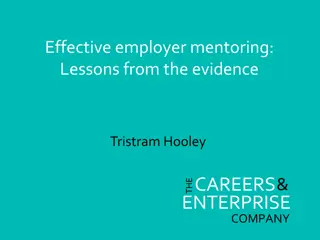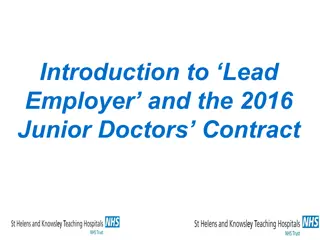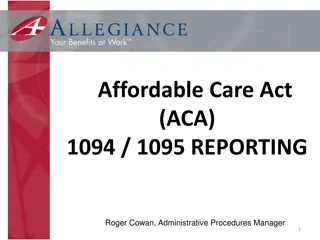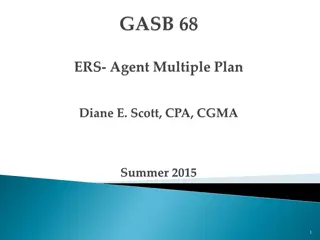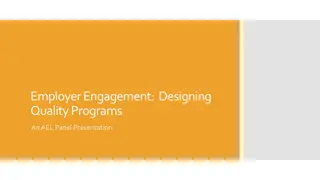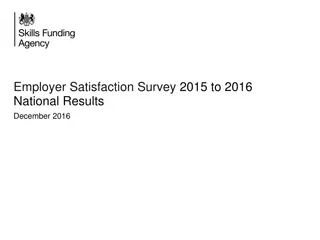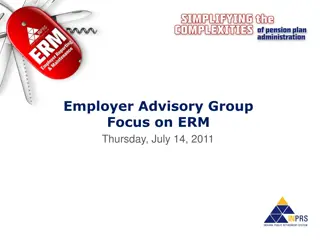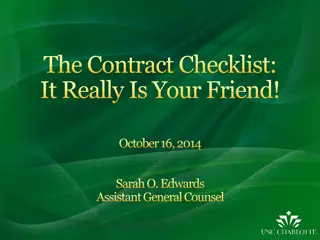Employer Checklist
"Learn about employer responsibilities when a worker is injured including duties, reporting requirements, and filing forms in the event of a work-related injury. Understand steps to take to ensure compliance with insurance companies and support injured employees effectively."
Download Presentation

Please find below an Image/Link to download the presentation.
The content on the website is provided AS IS for your information and personal use only. It may not be sold, licensed, or shared on other websites without obtaining consent from the author.If you encounter any issues during the download, it is possible that the publisher has removed the file from their server.
You are allowed to download the files provided on this website for personal or commercial use, subject to the condition that they are used lawfully. All files are the property of their respective owners.
The content on the website is provided AS IS for your information and personal use only. It may not be sold, licensed, or shared on other websites without obtaining consent from the author.
E N D
Presentation Transcript
Employer Checklist Employer Checklist
Employer Duties: Employer Duties: If restricted work is available, Discuss with the injured worker: Starting time and date, What you can pay him/her based on new job duties. Talk with the employee who reports being injured. Get all the details you can while it is a fresh memory. Contact your insurance company right away to file a First Report of Injury. Send employee to your Preferred Provider (this is the company that you have selected to have your employees seen by when they have reported an injury. The employer will have an in-depth conversation with the adjuster assigned regarding the injury. The adjuster will speak with the employee and any potential witnesses to the reported injury. Stay in contact with your employee and the adjuster until the injured worker is back on the job. If the employee is released to work with restrictions: Get the doctor s list of restrictions from the injured worker or directly from the doctor s office, and Meet with the injured worker to see if work is available that he/she can do. Report the restricted work to the adjuster Inform the adjuster When the injured worker is scheduled to return to restricted work. If the injured worker will not be earning what he/she earned before, send the adjuster wage information on a weekly basis to determine if temporary partial benefits are due. (Employees must be paid weekly when out on Workers Compensation) If the injured worker is unable, due to restrictions, continue working, or if you can t provide him/her restricted work. If the doctor releases him/her to regular work
Reporting Requirements Reporting Requirements Report all job-related injuries to the insurance company within 7 days of discovery. Provide a copy of the injury report to the injured worker. Report required wage information to the insurance company within 30 days of learning of an injury that will require the employee to miss work for more than 7 days.
Overview of Forms Filed in Overview of Forms Filed in the Event of a Work the Event of a Work- -Related Related Injury Injury
Explanation of the First Report of Explanation of the First Report of Injury (WCB Injury (WCB- -1) 1) Employers are required to file First Report of Injury (FROI) whenever an employee loses a full day of work. A full day of work could be a single workday, or it could be separate periods of lost time that equal to a full day of work. An employer must file this form if an employee asserts a work-related injury even if the employer disagrees that it is work -related.
Explanation of the Wage Explanation of the Wage Statement (WCB Statement (WCB- -2) 2) 1. Maine Law requires that in all claims for work- related injury where the employee loses 7 days or more the employers file a wage statement within 30 days of notice that an employee out of work for the reported injury. The purpose of this form is to establish the basis for the employee s average weekly wage and compensation rate to be paid in the event the employee is unable to continue working because of this injury. The insurer cannot accurately determine what the employee is owed unless it has received the earnings for the 52 weeks prior to the date of the reported injury. This results in the employee being paid an estimate which is generally lower than it will be once it is computed correctly. The wage form consists of the 52 weeks of actual wages paid prior to the employee s injury. 2. The payroll that employers report to the insurance company for premium purposes DOES NOT satisfy this requirement. The employer must fill out the employee s actual wages in cases of injury. If the employer pays the employee biweekly, the employer still must break down the pay history into single weeks. Payroll companies may provide this information; however, it is still the employer s responsibility to submit the information to the adjuster assigned to the claim. The employer should be ensuring that any request to a payroll company is timely and completed. There are times when the adjuster will request comparable employee wage statements. This is generally when an employee has less then 12 weeks. It is the employer s responsibility to provide this as well within the same 30-day window.
Explanation of the Fringe Benefit Explanation of the Fringe Benefit Statement (WCB Statement (WCB- -2B) 2B) Fringe benefits are defined as anything of value to an employee and dependents paid by the employer which is not included in the average weekly wage. Fringe benefits are due to the Board at the same time as the Average Weekly Wage sheet, that is 30 days from the day the employee begins missing work. If the employer stops paying fringe benefits to the employee, they must be added into the average weekly wage to establish a fair and reasonable wage for the employee.
Explanation of Memorandum of Explanation of Memorandum of Payment (WCB Payment (WCB- -3) 3) This is the form the insurance company must complete within 14 days of notice or knowledge of a claim that the employee is missing work due to a work-related injury. The employee must be either paid or denied within 14 days. This is one of the main reasons why the wage statements and fringe benefit worksheets need to be filed in a timely manner (within 30 days of notice or knowledge of the employee missing work for a reported work- related injury.
Explanation of Notice of Explanation of Notice of Controversy (WCB Controversy (WCB- -9) 9) The is the form that the insurance company sends to both the Workers Compensation Board and the injured employee, identifying that the insurance company is not going to pay the benefit requested by the employee. This determination is based on the investigation completed by the adjuster. This includes talking with all parties involved and the initial medical treatment notes. ALL OTHER FORMS REQUIRED BEFORE THIS FORM MUST BE FILED.
